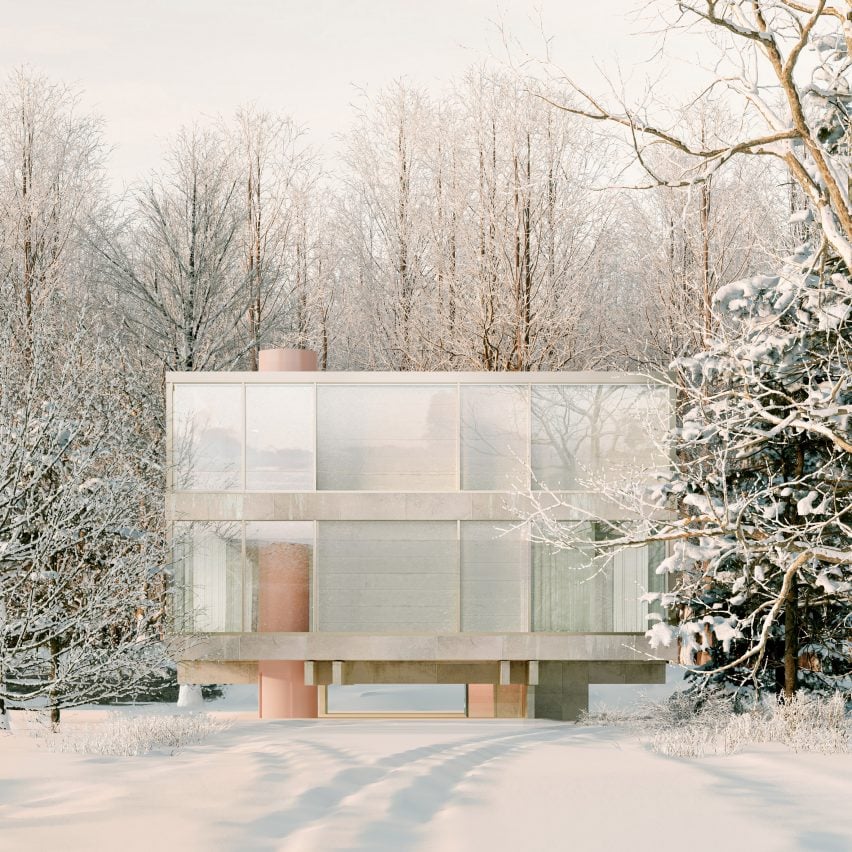
The clean geometry of Dieter Rams' industrial designs informed Winter House, a virtual residence by digital artist Andrés Reisinger and architect Alba de la Fuente that exists in a pink-hued winter world.
Designed as a hideaway in a snowy forest, the two-storey house is characterised by floor-to-ceiling glass windows and rectilinear volumes.
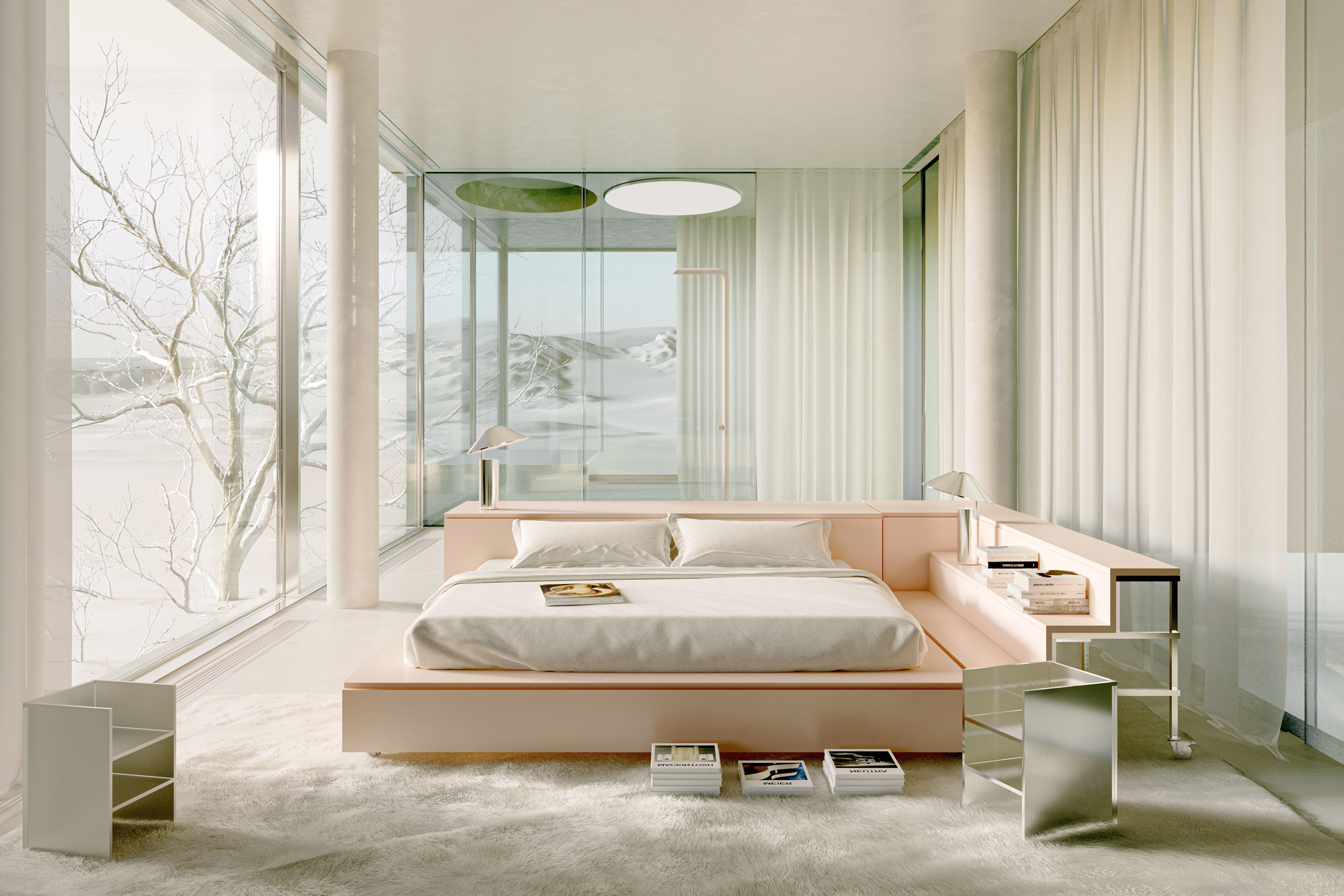
Winter House is stacked on a large concrete slab to create a "floating floor", underneath which a glass box houses a chunky concrete staircase that leads visitors from the front door into the house.
A tubular pink elevator runs from the top to the bottom of the structure and can be seen through the house's glass facade.
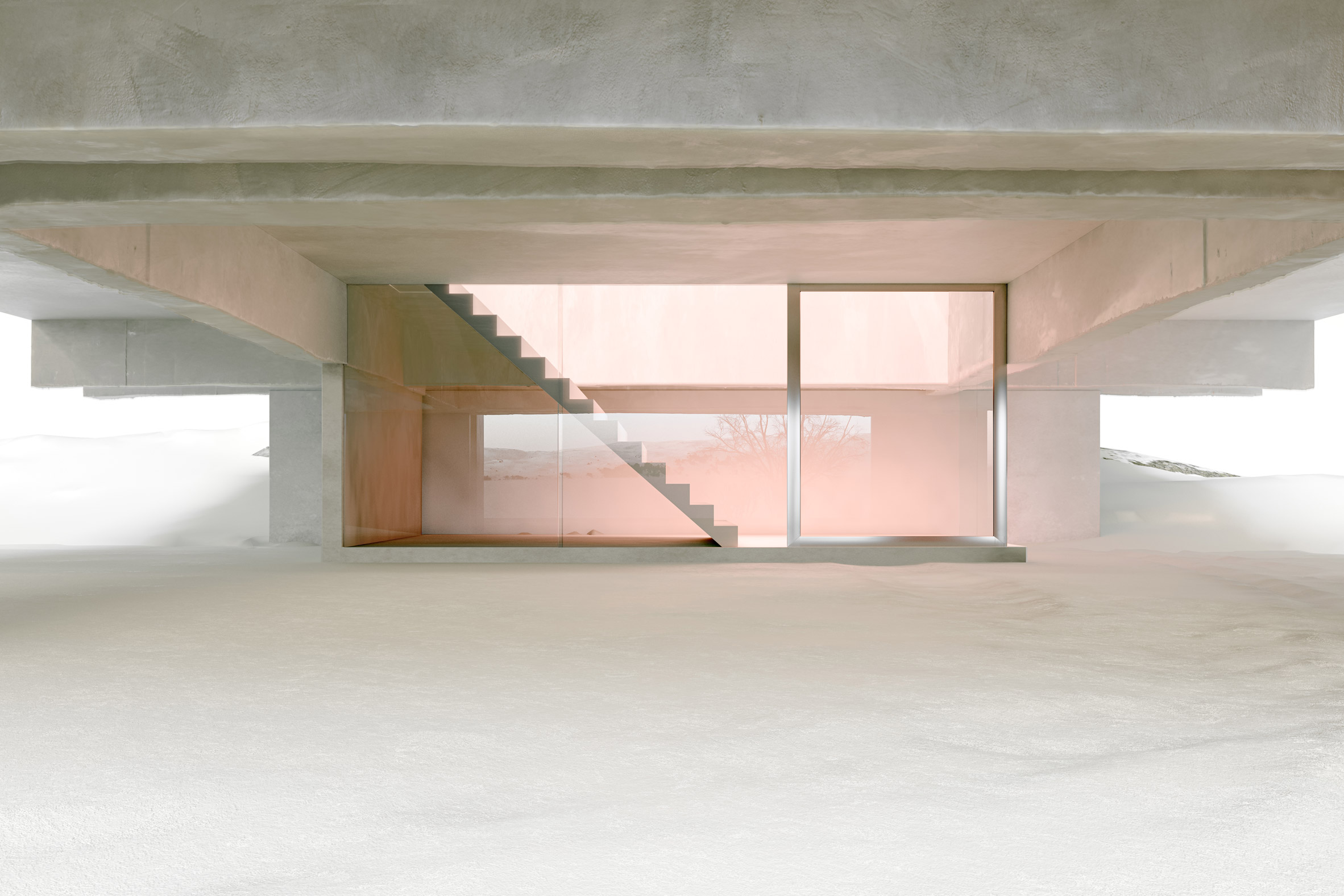
Argentinian digital artist Reisinger created the house together with Madrid-based architect De la Fuente to reflect the early 1960s projects of industrial designer Dieter Rams, while also exploring winter in the metaverse.
"We wanted to picture what this time of year looks like in the metaverse, and so we gathered all the feelings that we associate winter with – mainly stillness and comfort – and transported them into this parallel reality," Reisinger told Dezeen.
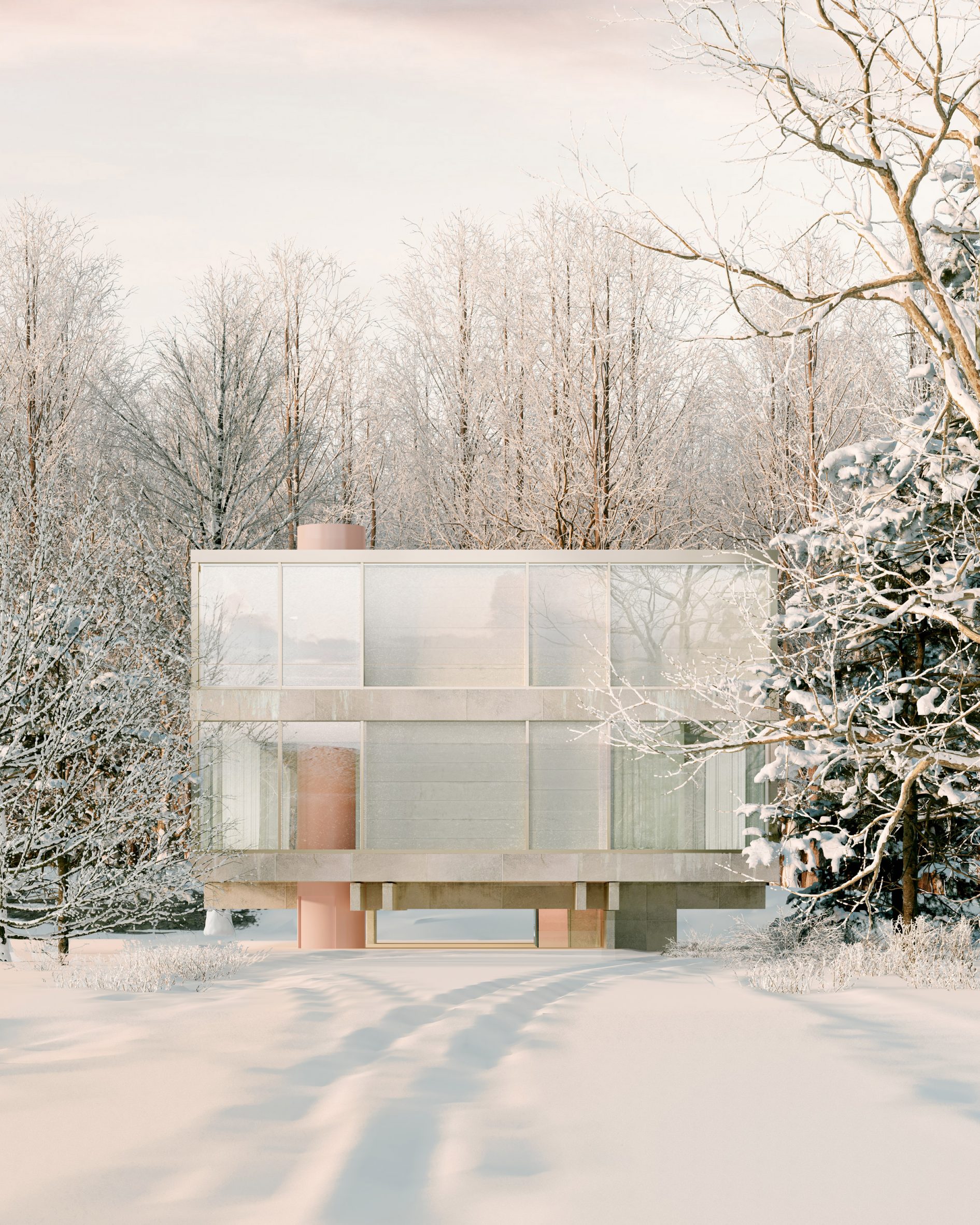
The metaverse is an umbrella term for any virtual-reality space where users can interact in a computer-generated environment such as the snow-covered landscape designed for Winter House.
Reisinger explained that the house's expansive windows intend to connect the inside and outside spaces, all of which have been rendered with a subtle splash of pink.
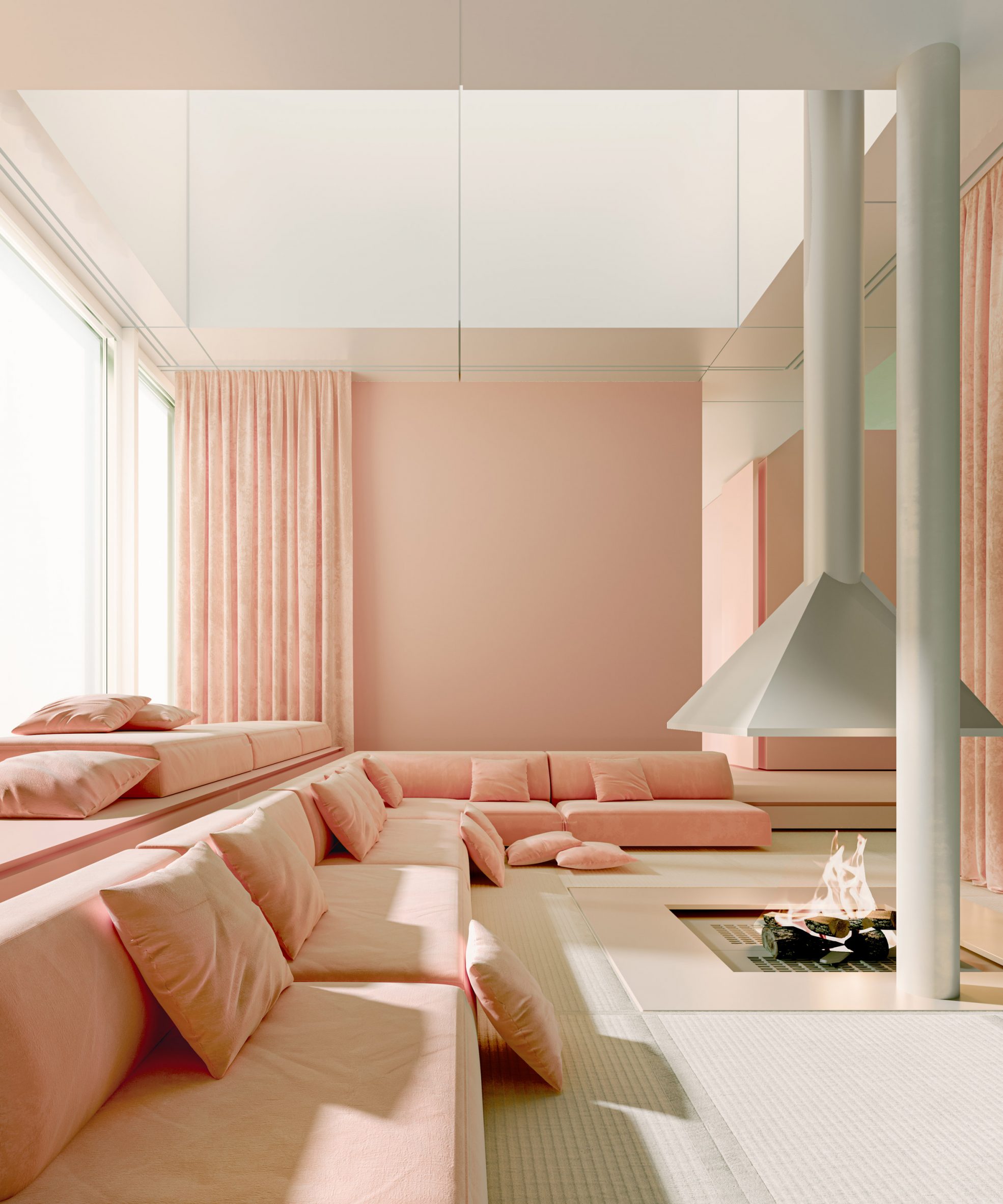
The virtual residence features a selection of minimalist furniture arranged in open-plan rooms that nod to modernist interior design.
An angular fireplace is suspended from a skylight in the living room, which has low-slung pink sofas and sleek, light-grey floors that add a wintery feeling to the interior.
"I like to use furniture as the protagonists of my spaces," Reisinger said. "I always push reality to a limit where it feels slightly distorted, but not explicitly – I only want to add a light touch of oddness, to unsettle viewers."
The digital artist explained that Winter House is a virtual residential project that can be applied to any metaverse, and is the second house of its kind that he has designed in collaboration with De la Fuente.
Designing virtual houses for the metaverse is no different to ones in the real world, Reisinger said.
"It's the same as for the physical world: these houses are designed to live in and use as curated spaces to showcase ourselves," he explained.
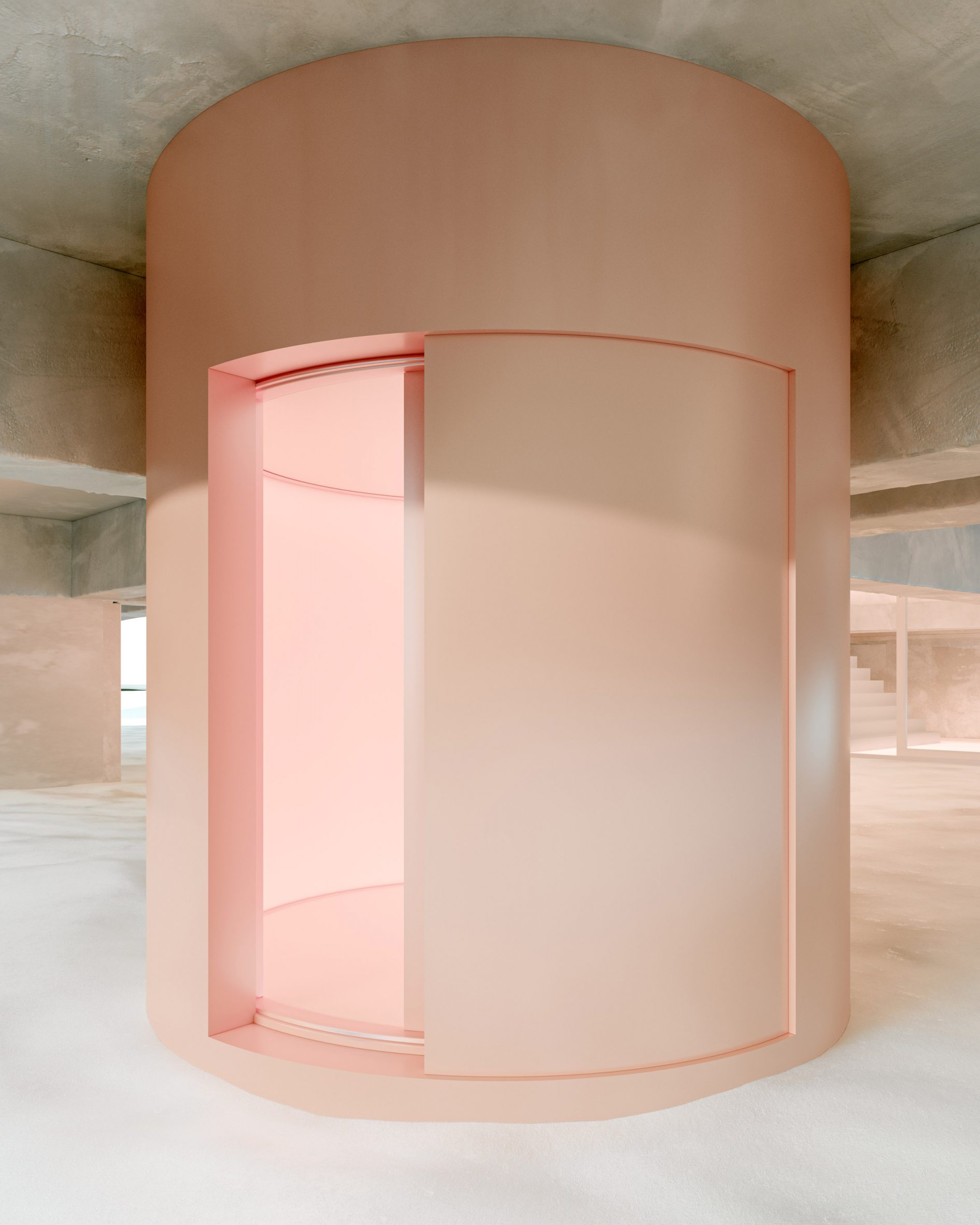
"I truly believe that we can use the metaverse as an exploration territory to apply successful outputs to our beloved physical world," he added.
"I see terrestrial nature and the metaverse as travelling in the same direction, not in opposition or contradiction."
Increasing interaction with the metaverse could even lead to a stronger relationship with nature, according to Reisinger.
"I envision that if we can transfer a good portion of our interest in buying material objects to the metaverse, then we’ll be able to strengthen our relationship with nature in our physical world," he said.
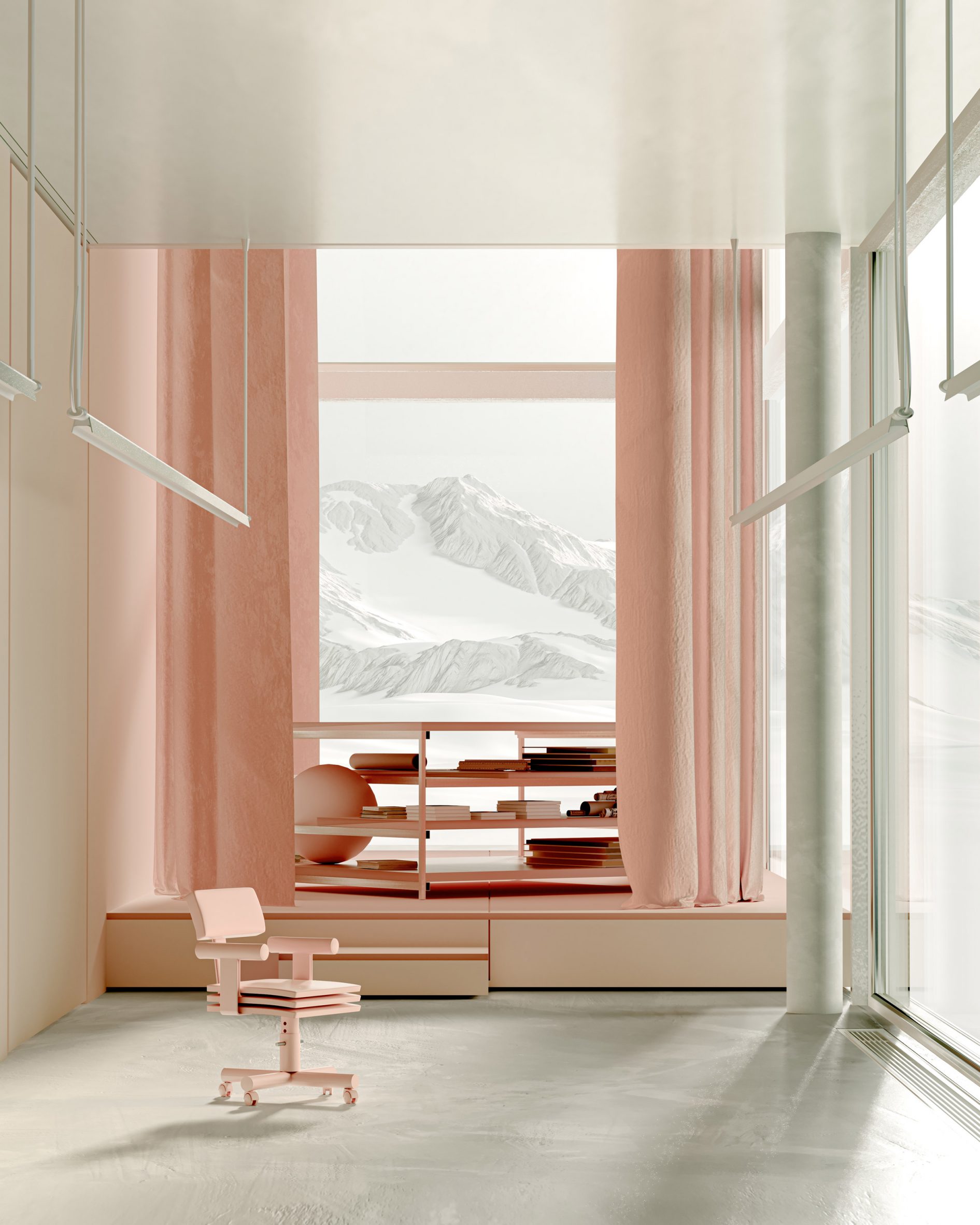
Reisinger revealed that Winter House is at the forefront of a new metaverse architecture company that he is spearheading with other creative partners, but said further information on this is not currently available.
After rising to prominence on Instagram through his distinctly dream-like renderings, Reisinger has completed a number of other virtual projects. These include the sale of a collection of virtual furniture that fetched almost $70,000 at an NFT online auction.
An armchair from the collection, called Hortensia, was recently made into a physical object with the assistance of Dutch design brand Moooi.
The renderings are courtesy of Andrés Reisinger and Alba de la Fuente.
The post Andrés Reisinger and Alba de la Fuente design modernist house in frosty metaverse landscape appeared first on Dezeen.
from Dezeen https://ift.tt/3FOfcbi
No comments:
Post a Comment